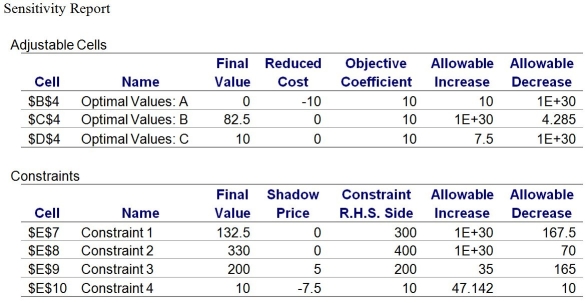Use this information,along with its associated Sensitivity Report,to answer the following questions.
A production manager wants to determine how many units of each product to produce weekly to maximize weekly profits.Production requirements for the products are shown in the following table.
Material 1 costs $7 a pound,material 2 costs $5 a pound,and labor costs $15 per hour.Product A sells for $101 a unit,product B sells for $67 a unit,and product C sells for $97.50 a unit.Each week there are 300 pounds of material 1;400 pounds of material 2;and 200 hours of labor.The output of product A should not be more than one-half of the total number of units produced.Moreover,there is a standing order of 10 units of product C each week.

-Suppose that the production manager procures an additional 10 labor hours.What impact will this have on the current optimal objective function value?
Definitions:
Executable Program
A file containing code that a computer's operating system can directly execute.
Machine Language
The lowest-level programming language, consisting of binary or hexadecimal codes that a computer's processor directly executes.
Procedural Language
A type of programming language designed to execute sequences of statements or instructions using a procedural approach.
Q2: Theory X and Theory Y were principles
Q5: In the context of the differences in
Q9: Kendall's three-symbol notation is sometimes extended to
Q29: What is the constraint associated with
Q35: Which of the following would probably NOT
Q37: Which of the following statements concerning decision
Q39: Refer to the table.What is the average
Q46: Refer to Scenario 12.1.The stressors associated with
Q47: Which of the following is the next
Q50: An investment strategy restricts the portfolio